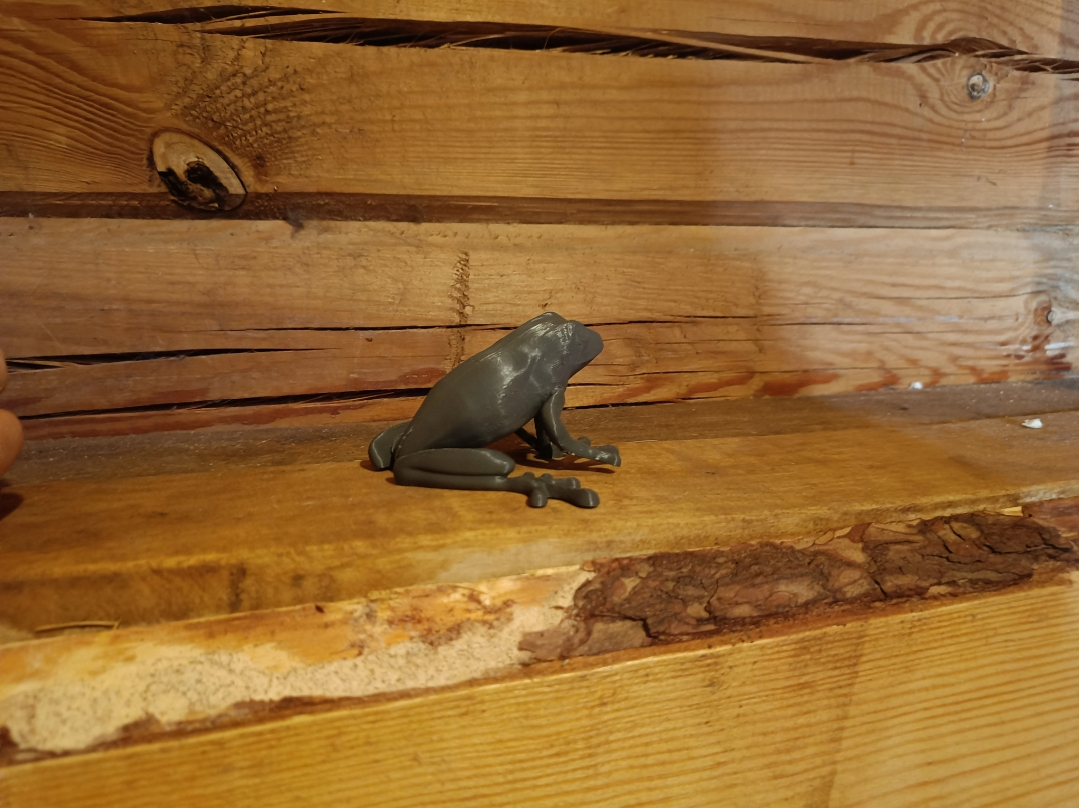I can’t remember if I saw the argument here or on Reddit, but this is my preferred platform so it’s going here.
Summary of argument: a user should have been using water for their thermal battery, not sand, because water has better heat capacity (4.18 joules per unit of mass person unit heat - 4.18/gK). Sand’s thermal capacity is significantly lower (0.835J/gK).
Looking at these numbers alone in the post I understood why someone would say that; it also made me question why so much research is being done on sand batteries. The user who argued against sand batteries missed a crucial factor: material density. Water has a density of 1000kg per m^3. Dry sand (regular not pure quartz sand) has a density of 1730 kg per m^3. I found no satisfactry response to the argument in that thread, but that thread is now lost to me. I have also been curious about how much better regular sand is for heat batteries than water.
When designing large batteries, the goal is usually energy per volume. Let’s compare 1m^3 of each (roughly 3.3ft cube) and how much heat it can hold before the next state change (which matters a lot when managing the pressure from steam).
Total stored energy = mass (g) * thermal capacity (J/gK) * heat (kelvin).
Water: 1,000,000 * 4.18 * 373.15 = 1,559,767,000J Sand: 1,730,000 * 0.835 * 1996.15 = 2,883,538,482.5J
Over 1 billion more joules per m^3. I hope this makes it clearer why sand batteries are such an area of interest lately. It certainly did to me.
Disclaimer: I am not an expert, so there may be mistakes. All the numbers and relevant equations were found on the internet.
What about loss of material due to evaporation? Sand batteries can retain their mass in an unsealed container, vs water batteries which would lose mass in an open container or be under dangerously high pressures in a sealed container.
deleted by creator
Assume closed system. The theory here is that when under pressure it becomes more difficult for some materials like water to change state, making it a viable energy storage medium.
Should you at the very least not have the energy difference between something like 20°C and whatever the max is (100°C for water, as you put). All the energy down to 0K will not be possible to extract. This should favour sand even more.
But I would argue its harder to put extra heat into sand that has already 2000K, and also bigger heat loss. But I don’t know anything about how it works, just some common sense.
You can fight a lot of that with bigger batteries. Surface area goes up by r^2, but volume goes up by r^3.
More expensive batteries will also warrant better insulation.
Combine those and sand batteries make decent sense.
From the math I looked at, that doesn’t seem to be the case. What we’re actually doing is fighting radiative and convective heat loss, basically requiring more energy per second to compensate for increasing heat losses per second. An adequately insulted sand battery would negate a lot of that.
It is an interesting these technologies you compare. Yes, a sand battery is in potential capable of storing higher temperatures if the source can generate these temperatures. We also have to look at the heat transfer that will seperate both energy buffers if seen from an application point of view. The heat transfer in sand is very low and this intrinsic insulation of sand begins to be very interesting when larger volumes are used. Water has a problem that it needs an extra insulation layer and larger volumes would be less interesting in comparison. However water is faster in exchange and is interesting as smaller buffer with shorter bursts and intake of heat.
Alright so I have a question for you. Let’s say I’m designing one of these things for a greenhouse or something. I’m thinking underground storage tank of 500 gallons or so but basically filling it with sand and then again topping it off with water. It should minimize convection currents in the water and where it there isn’t much of a thermal draw there shouldn’t be much of an issue right?
Unfortunately that would negate the high storage temperature of sand (up to 800 degree c) as water will turn into steam after 100deg. So it is either low temperature sand or water with lower energy density.
Thermal mass would be secondary for the sand. I’m more concerned with it helping the structure of the tank underground and avoiding slump from what the tank would be buried in. Probably feeding it heat from a thermal solar set-up.
Good question, not being an expert I don’t have a great answer. But maybe doing a composite sand that combined something like copper, iron, it aluminum dust with the sand to increase the ability of the battery to more easily move heat around. Or using the chosen metal in a bar or pipe as heat transfer out of the center. The only issue with that is it lowers the operating temp and would require more active cooling, this negating some of the self-insulating benefits of sand. This could be solved by treating them like control rods, and make them movable so they could be drawn out when extracting energy is not necessary.
I like aluminium powder idea. And use the metal bar as heatpipe is a good idea. I would not see temperature as problem as most materials you mention can handle 800 deg. The idea is that you can draw energy from it thus cooling it. I think a molten salt chamber uses this combination of fast transfer and high temperature
You’re right about rapid transfer out. I guess I wasn’t clear about the imagined scenario where the battery may sit untapped for hours or more, and that could definitely cause issues with the metal melting at the upper end of operator temps. Interesting idea for solarpunk story conflict: for whatever reason heat isn’t being extracted fast enough so the batteries are overheating and ‘slagging’ themselves.
I have superficially researched both options (with the conclusion that I cannot use either, since my installation would be too small, and would suffer from severe heat loss due to an unfavourable volume-to-surface ratio - it makes sense to design thermal stores for a city or neighbourhood, not a household).
I’d add a few notes:
-
A thermal store using silicate sand is not limited by the melting point of the sand, but the structural strength of the materials holding the sand. You can count on stainless steel up to approximately 600 C, more if you design with reserve strength and good understanding of thermal expansion/contraction. Definitely don’t count on anything above 1000 C or forget the word “cheap”. I have read about some folks designing a super-hot thermal store, but they plan to heat graphite (self-supporting solid material) in an inert gas environment.
-
Heat loss intensifies with higher temperatures, and the primary type of heat loss becomes radiative loss. Basically, stuff starts glowing. For example, the thermal conductivity of stone wool can be 0.04 W / mK at 10 C, and 0.18 W / mK at 600 C.
-
Water can be kept liquid beyond 100 C. The most recent thermal stores in Finland are about 100 meters below surface, where the pressure of the liquid column allows heating water to 140 C.
-
However, any plan of co-generation (making some electricity while extracting the stored heat) requires solid materials and high temperatures.
Thanks for the input! I’ve had several more thoughts:
-
You’re absolutely right about the cost, but it could be contained with refractory cement and would not have to rely solely on metal casings. It seems like buying either in bulk has comparable pricing.
-
interest problem. I tried to find some info, but there’s a lot of engineeting math (I’m an English teacher who also loves the sciences) I don’t have the time to sort out right now. I think that using rock wool and refractory cement (see number 1) could help offset this energy loss.
-
I knew that water could be kept liquid under pressure, but for the purposes of citizen science and making tech more democratic, high pressure systems are a lot of risk and can be devastating when mistakes are made.
-
Absolutely. And that’s the goal of my thoughts. Finding a cheap material that can hold high temperatures and remain solid. The transfer to electricity could be done by using the heated mass to heat a hot pumped liquid or using transfer rods made of a solid material with a high heat transfer coefficient.
The transfer to electricity could be done by using the heated mass to heat a hot pumped liquid or using transfer rods made of a solid material with a high heat transfer coefficient.
Alternatively, heat can be extracted by pumping liquid metal (sodium, tin, low-temperature eutectic alloys) in a pipework of copper (if there is chemical compatibility with copper). But handling liquid metal with a magnetic pump isn’t typically done on the DIY tech level.
To be honest, I tried a fair number of experiments on the subject, including low-temperature Stirling motors. They’re difficult to build well. I would recommend plain old steam turbine. Steam means pressure, pressure means precautions (risk of bursting, risk of getting burned), but modern approaches to boilers try to minimize the amount of water in the system, so it couldn’t flash to steam and explode.
-
-
Water is nice if you want to move the heat - steam makes it easy to pipe it somewhere else. Also you can get extra energy out of the phase change. If you are just storing heat and using heat exchange, I think bricks or rocks would work better than sand. But it really depends what temperatures you want to use the heat.
https://www.ted.com/talks/john_o_donnell_can_a_simple_brick_be_the_next_great_battery
How are you getting your sand that hot?
There is a sand battery start up in Tampere (Finland) that is heating to 1k Celsius so by the OPs calculations that would still give it a small edge over water but with the added bonus of the intrinsic insulation - very handy in the cold winters. They have a pilot plant that is being developed to support the municipal heating network.
Curious what they’re using for a transfer liquid. Are NaK or sodium systems pressurized to handle that?
It looks like their current generation of systems are electricity in, via resistive heating, then heat out via hot air. Efficient electricity out would appear to be an active research area for them, but it would also seem, that there are still a number of applications where on demand heat at several hundreds of degrees is still very valuable.
The easiest method is using sand as an electrical resistor allowing the resistance to heat the sand up. I’ve also wondered about other methods too, such as solar ovens or baking the sand in some way and dumping the hot sand into the battery.
I think industrial applications have used a lot of molten salt in the past, but at some point it’s going to come down to how well your containment can maintain pressure to prevent state changes.
deleted by creator





